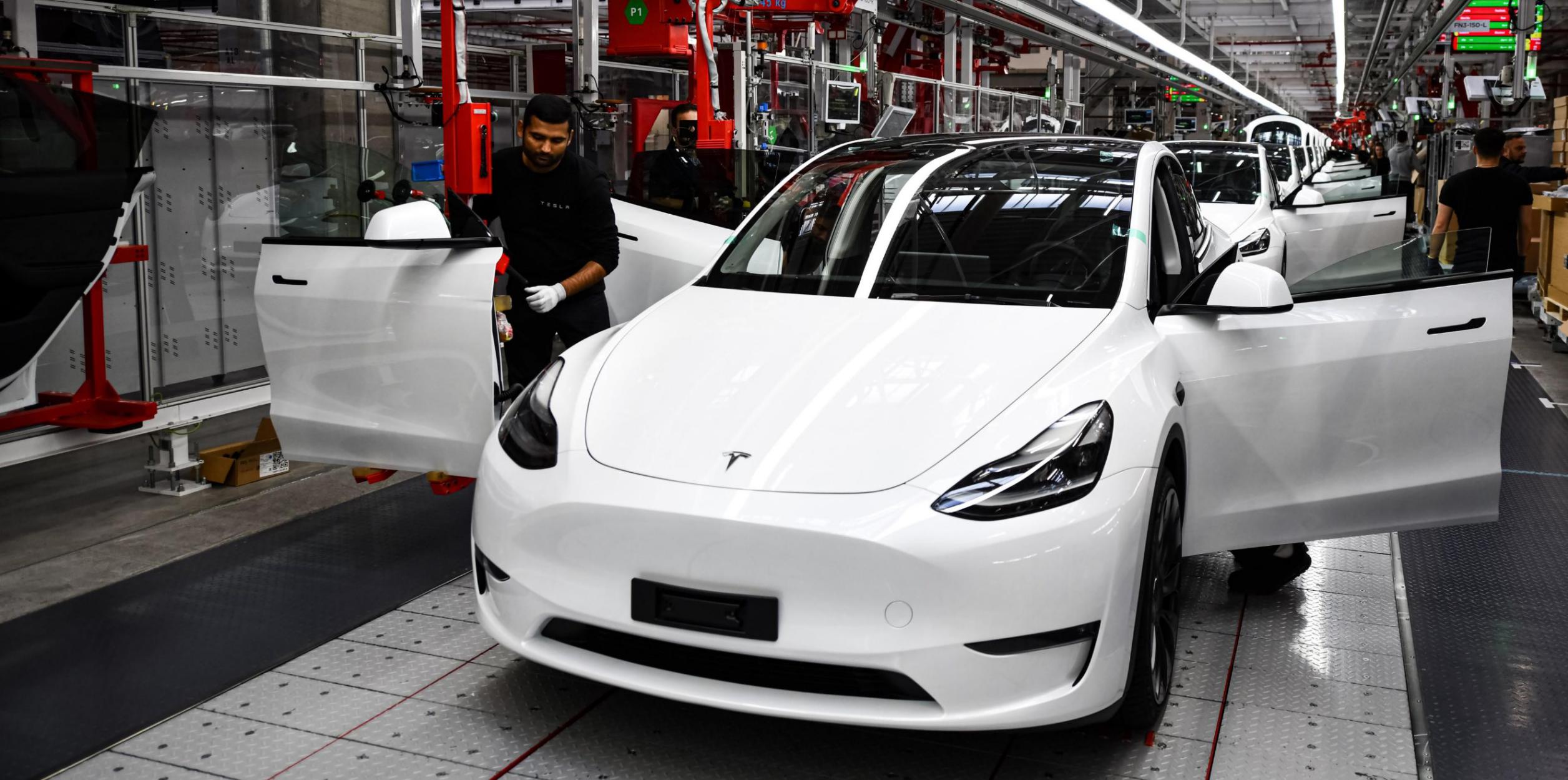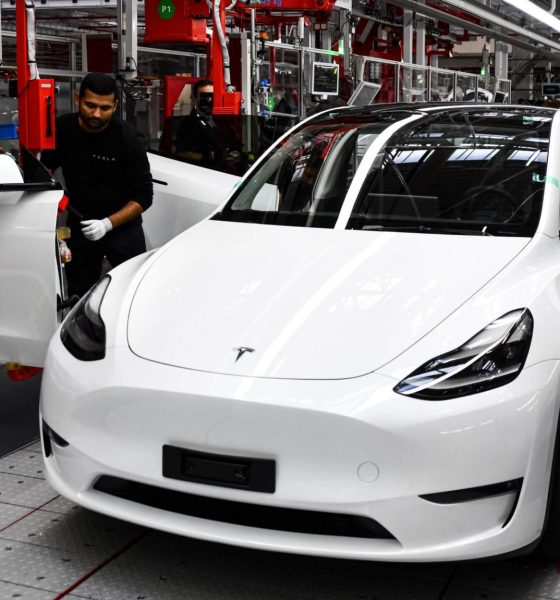Tesla was found to be one of the most unreliable brands in America, according to Consumer Reports’ annual reliability report.
Consumer Reports‘ annual reliability rankings have been released, and with data from 24 brands and over 300,000 vehicles, Tesla fell near the bottom (19/24) along with Mercedes-Benz, Jeep, Volkswagen, GMC, and Chevrolet. Electric vehicles overall also placed poorly, being the second least reliable category of vehicles. Hybrids/plugin hybrids, especially those from Toyota, were found to be the most reliable.
Before diving deeper into the rankings, it is crucial to understand how Consumer Reports creates its yearly reliability rankings in the first place. This year, the company surveyed over 300,000 vehicles (sold between 2000-2022), and over the past year, owners were asked to report issues they had with their vehicles. Issues were categorized into 17 categories; engine issues, transmission issues, interior electronics issues, etc. From this accumulation of data, Consumer Reports then gives each brand a grade out of 100 regarding their overall reliability.
Consumer Reports also stipulates that they will only rank brands that they have “sufficient survey data for two or more models.” Hence the absence of brands such as Rivian, Alfa Romeo, and Lucid.
Tesla scored a reliability score of 40/100, while electric vehicles overall scored 36/100. It isn’t all bad news for Tesla; its score matches the average for domestic automakers, the company was able to improve its ranking by four places compared to last year, and none of its vehicles made it to the list of 10 least reliable vehicles in America. A list that notably included the popular Hyundai Kona EV scoring 5/100.
Conversely, hybrid and PHEV vehicles crushed the competition with an average score of 78/100. And unsurprisingly, the brand with the most extensive representation within that segment, Toyota, achieved the number 1 spot with an overall reliability score of 72/100. Toyota was joined by Lexus, BMW, Mazda, and Honda in the top 5 (descending order).
Consumer Reports’ results lead to one central question, what influenced Tesla (and electric vehicles generally) in scoring so low compared to the competition? This question becomes especially confounding when the prevailing narrative is that “electric vehicles are generally more reliable than their gas counterparts.”
Consumer Reports’ analysis only addresses this question once, noting that “As more EVs hit the marketplace and automakers build each model in greater numbers, we are seeing that some of them have problems with the battery packs, charging systems, and the motors in their drive systems. Owners of the Chevrolet Bolt, Ford Mustang Mach-E, Hyundai Kona Electric, and Volkswagen ID.4 all reported some of these issues.”
Another couple of issues that may be plaguing Tesla include build quality and software problems. Tesla has notoriously had quality control issues, which will certainly not aid its reliability score. At the same time, as Tesla attempts to offer the bleeding edge of software innovation, they undoubtedly encounter more software issues than have been typically seen in the automotive space. And while these problems are typically fixed through updates and technical support quickly, they could easily contribute to Tesla’s poor performance.
Looking to the future, it is clear that Tesla needs to continue to dedicate itself to improving QC and general reliability. It is easy to say, “Tesla needs to increase production,” but consumers will pay the price if this production expansion comes at the cost of reliability.
What do you think of the article? Do you have any comments, questions, or concerns? Shoot me an email at william@teslarati.com. You can also reach me on Twitter @WilliamWritin. If you have news tips, email us at tips@teslarati.com!

News
Tesla FSD fleet is nearing 7 billion total miles, including 2.5 billion city miles
As can be seen on Tesla’s official FSD webpage, vehicles equipped with the system have now navigated over 6.99 billion miles.

Tesla’s Full Self-Driving (Supervised) fleet is closing in on almost 7 billion total miles driven, as per data posted by the company on its official FSD webpage.
These figures hint at the massive scale of data fueling Tesla’s rapid FSD improvements, which have been quite notable as of late.
FSD mileage milestones
As can be seen on Tesla’s official FSD webpage, vehicles equipped with the system have now navigated over 6.99 billion miles. Tesla owner and avid FSD tester Whole Mars Catalog also shared a screenshot indicating that from the nearly 7 billion miles traveled by the FSD fleet, more than 2.5 billion miles were driven inside cities.
City miles are particularly valuable for complex urban scenarios like unprotected turns, pedestrian interactions, and traffic lights. This is also the difference-maker for FSD, as only complex solutions, such as Waymo’s self-driving taxis, operate similarly on inner-city streets. And even then, incidents such as the San Francisco blackouts have proven challenging for sensor-rich vehicles like Waymos.
Tesla’s data edge
Tesla has a number of advantages in the autonomous vehicle sector, one of which is the size of its fleet and the number of vehicles training FSD on real-world roads. Tesla’s nearly 7 billion FSD miles then allow the company to roll out updates that make its vehicles behave like they are being driven by experienced drivers, even if they are operating on their own.
So notable are Tesla’s improvements to FSD that NVIDIA Director of Robotics Jim Fan, after experiencing FSD v14, noted that the system is the first AI that passes what he described as a “Physical Turing Test.”
“Despite knowing exactly how robot learning works, I still find it magical watching the steering wheel turn by itself. First it feels surreal, next it becomes routine. Then, like the smartphone, taking it away actively hurts. This is how humanity gets rewired and glued to god-like technologies,” Fan wrote in a post on X.
News
Tesla starts showing how FSD will change lives in Europe
Local officials tested the system on narrow country roads and were impressed by FSD’s smooth, human-like driving, with some calling the service a game-changer for everyday life in areas that are far from urban centers.

Tesla has launched Europe’s first public shuttle service using Full Self-Driving (Supervised) in the rural Eifelkreis Bitburg-Prüm region of Germany, demonstrating how the technology can restore independence and mobility for people who struggle with limited transport options.
Local officials tested the system on narrow country roads and were impressed by FSD’s smooth, human-like driving, with some calling the service a game-changer for everyday life in areas that are far from urban centers.
Officials see real impact on rural residents
Arzfeld Mayor Johannes Kuhl and District Administrator Andreas Kruppert personally tested the Tesla shuttle service. This allowed them to see just how well FSD navigated winding lanes and rural roads confidently. Kruppert said, “Autonomous driving sounds like science fiction to many, but we simply see here that it works totally well in rural regions too.” Kuhl, for his part, also noted that FSD “feels like a very experienced driver.”
The pilot complements the area’s “Citizen Bus” program, which provides on-demand rides for elderly residents who can no longer drive themselves. Tesla Europe shared a video of a demonstration of the service, highlighting how FSD gives people their freedom back, even in places where public transport is not as prevalent.
What the Ministry for Economic Affairs and Transport says
Rhineland-Palatinate’s Minister Daniela Schmitt supported the project, praising the collaboration that made this “first of its kind in Europe” possible. As per the ministry, the rural rollout for the service shows FSD’s potential beyond major cities, and it delivers tangible benefits like grocery runs, doctor visits, and social connections for isolated residents.
“Reliable and flexible mobility is especially vital in rural areas. With the launch of a shuttle service using self-driving vehicles (FSD supervised) by Tesla in the Eifelkreis Bitburg-Prüm, an innovative pilot project is now getting underway that complements local community bus services. It is the first project of its kind in Europe.
“The result is a real gain for rural mobility: greater accessibility, more flexibility and tangible benefits for everyday life. A strong signal for innovation, cooperation and future-oriented mobility beyond urban centers,” the ministry wrote in a LinkedIn post.
News
Tesla China quietly posts Robotaxi-related job listing
Tesla China is currently seeking a Low Voltage Electrical Engineer to work on circuit board design for the company’s autonomous vehicles.

Tesla has posted a new job listing in Shanghai explicitly tied to its Robotaxi program, fueling speculation that the company is preparing to launch its dedicated autonomous ride-hailing service in China.
As noted in the listing, Tesla China is currently seeking a Low Voltage Electrical Engineer to work on circuit board design for the company’s autonomous vehicles.
Robotaxi-specific role
The listing, which was shared on social media platform X by industry watcher @tslaming, suggested that Tesla China is looking to fill the role urgently. The job listing itself specifically mentions that the person hired for the role will be working on the Low Voltage Hardware team, which would design the circuit boards that would serve as the nervous system of the Robotaxi.
Key tasks for the role, as indicated in the job listing, include collaboration with PCB layout, firmware, mechanical, program management, and validation teams, among other responsibilities. The role is based in Shanghai.
China Robotaxi launch
China represents a massive potential market for robotaxis, with its dense urban centers and supportive policies in select cities. Tesla has limited permission to roll out FSD in the country, though despite this, its vehicles have been hailed as among the best in the market when it comes to autonomous features. So far, at least, it appears that China supports Tesla’s FSD and Robotaxi rollout.
This was hinted at in November, when Tesla brought the Cybercab to the 8th China International Import Expo (CIIE) in Shanghai, marking the first time that the autonomous two-seater was brought to the Asia-Pacific region. The vehicle, despite not having a release date in China, received a significant amount of interest among the event’s attendees.










